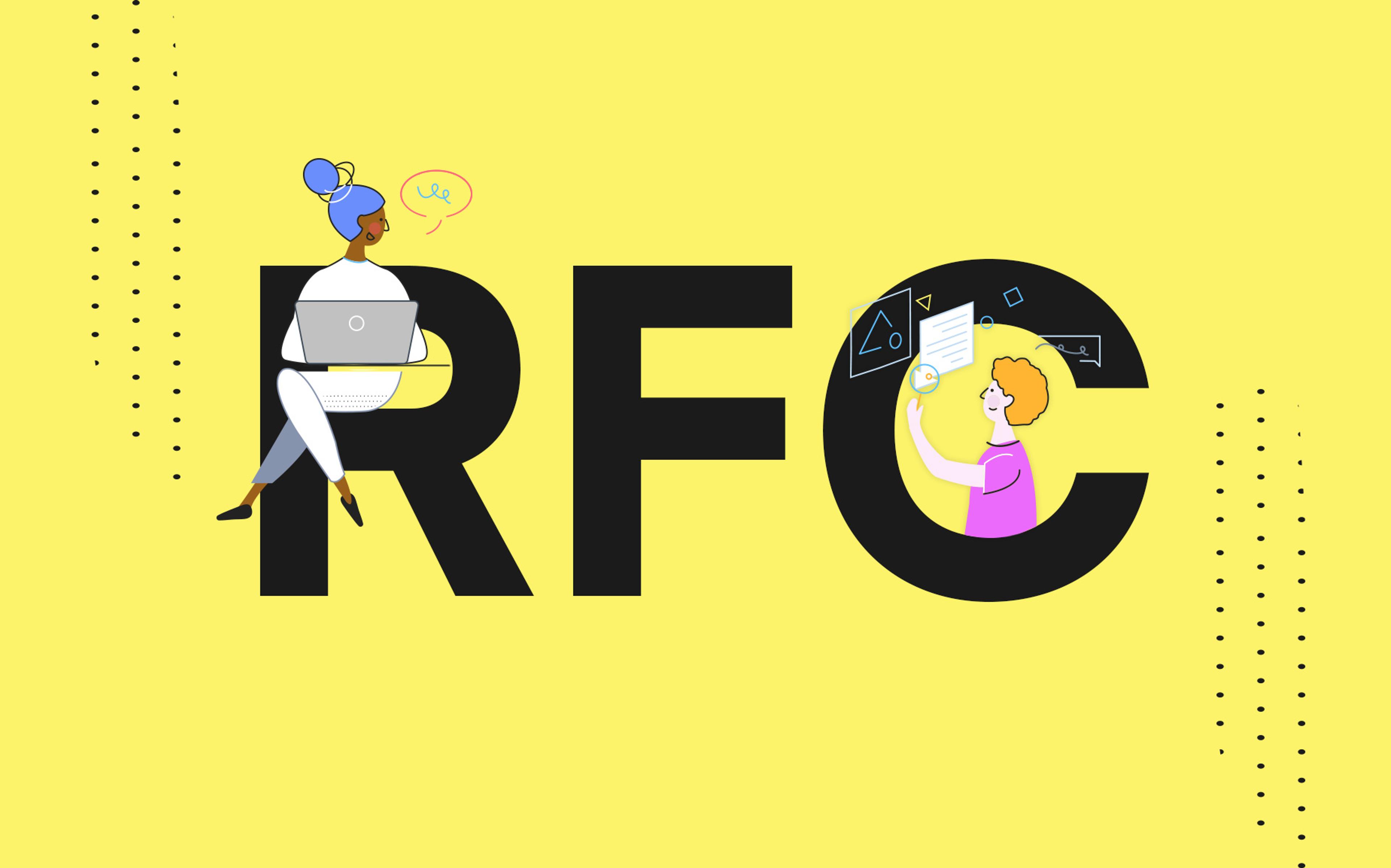Let’s consider two engineering managers, John and Jane. They have the same seniority, they both work on similar projects in similar conditions and their teams are both terribly smart.
John insists on personally reviewing and approving every change, no matter how small. This doesn’t just concern the codebase: if an engineer wants to try a new productivity tool with the team, they have to go through John. If the team wants to move an internal meeting to a time that better suits everyone, she has to go through John. Every little detail is scrutinized and torn apart to make sure John’s team don’t waste their time on “useless” initiatives.
Jane, on the other hand, is more comfortable with experimenting. She doesn’t require the team to ask her approval for everything, but she is there to support them when they want to try something new, and helps them validate initiatives by setting clear goals and metrics that make sense for them. Then, she takes successful experiments and acts as the team’s champion in the larger organization, implementing these initiatives at a higher level.
Which team do you think will be happier, more productive and more innovative — John’s or Jane’s?
Bottleneck Managers Create Permission-Centric Organizations
John is the typical example of a Bottleneck Manager. We all know at least a few Bottleneck Managers: they hoard information and authority and require teammates to go to them for every little thing. Want to try a new tool? Ask your manager. Want to move a meeting? Ask your manager. Want to change the name of a Slack channel? Ask your manager.
Put enough Bottleneck Managers together and you have an alienating workplace where there’s a process for everything and no way to change that process, until one day you realize you’ve just been doing the same thing for the past five years and you’ve become irrelevant two years ago anyway, but no one has told you because they were too busy writing code. You have, to put it briefly, a Permission-Centric Organization.
Permission-Centric Organizations are the natural result of one or more of the following factors:
-
Lack of trust: his goes both ways. Managers may not trust their teams to make sensible decisions, or teams may not trust their managers to make good use of the results of their decision-making. If a teammate wants to try a new technology but knows their manager will scoff at it, they may not even propose it, to avoid the uncomfortable feeling of rejection.
-
Lack of time: managers want to make sure everyone on their team is using their time in an optimal way. In doing so, they may overly centralize the decision-making process, to the point where the team is not free to do anything but write code. In some companies, managers will allocate all of the engineers’ time to “busywork”, leaving no room for anything else.
-
High cost of error: if you have a proven process and battle-tested tools in place, it’s scary to try something new. Sure, the new tool/methodology may improve your work by an order of magnitude, but what if it doesn’t work and you end up alienating your stakeholders? The more successful you get, the more this becomes a problem.
-
Lack of competency: when team members are not competent enough to experiment in a safe, productive way, management may create constraints around experimentation and take the reins of the engineering process. This may also come from the team members themselves: if they are not (or don’t feel like they are) competent enough, they may avoid trying new ideas for fear of making a mistake.
These are all valid problems. If you’re running a successful company, you want to make sure innovators are competent, you want to trust them and you want them to trust you, you want to dedicate time to the things that really matter, and you want to eliminate or minimize any room for mistake.
However, there’s a way to have your cake and eat it too. You can have all of the above, without hindering your team’s ability to come up with new ideas and validate them. The way to do it is to stop being a Bottleneck Manager and start being a Multiplier Manager.
Multiplier Managers Create Feedback-Centric Organizations
Unlike John, Jane is a Multiplier Manager. A Multiplier Manager supports their team, but also allows them to make their own decisions. They’re proactive in identifying opportunities, but let the team capitalize on opportunities in their own way. They create processes and boundaries for safe innovation and encourage the team to pursue their ideas. They are — by far — the best kind of manager you’ll ever work with.
Multiplier Managers are the bread and butter of Feedback-Centric Organizations. These are workplaces where you can — and are strongly encouraged to — run an initiative by your manager to get feedback on it, without first having to ask permission. They are workplaces where ideas move freely from one desk to the other, in continuous evolution.
Just like a Bottleneck Manager and a Permission-Centric Organization are identified by a particular set of dysfunctions, Multiplier Managers and Feedback-Centric organizations exhibit and promote most (preferably all) of the following virtuous traits.
Provide context about the business
Lack of transparency about the business context and business goals of their organization is one of the most common reasons why people don’t feel like they’re empowered to change their surroundings — withholding information may save your team some time, but it also prevents them from providing their perspective and putting their own twist to what you’re doing.
Multiplier Managers make sure to share all relevant information with their team. Not just what they’re doing, but why they’re doing it and whom they’re doing it for; any decisions that are made, and why they’re being made; who’s responsible for what; any processes the team follows and the rationale behind them, and anything else that might be of interest to other people.
Once the amount of information is too much to be pushed to all teammates all the time, they start publishing it instead and give their teammates an easy, clear way to access it, so that they don’t risk wasting the team’s time with anything they don’t find interesting. This may take different forms: a shared Google Doc, an entire shared folder, a company playbook, meeting recordings or a bunch of those — whatever works for the company and how people communicate.
Define what “good” innovation looks like
This is where bureaucracy and innovation meet: the best approach to innovating is by doing it within clear constraints and with a streamlined process. Constraints give your team members a way to frame their ideas in a way that makes sense for everyone, and process lets them validate and execute their ideas in a controlled way.
Here’s the stuff that Multiplier Managers are concerned with:
-
What kind of innovation is good innovation? Is it okay to propose rewriting a perfectly working project in a new, shinier technology? Is it completely forbidden, or should it just be a time-boxed endeavor?
-
How do we determine if an idea is successful? Do we need to set clear business metrics in advance, or do we use more qualitative metrics? Does it depend on the context?
-
What’s the process for collecting feedback? Even more important, what’s the process for understanding whom to collect feedback from in the first place? What kind of feedback should be asked for at what points during the process? Your mileage may vary, but the mere act of creating a process will be beneficial to your team and make it known that not only is it okay to experiment, it’s encouraged and codified.
Use automation to create safeguards
If your organization is run by humans, someone is bound to screw up at some point. While Bottleneck Managers run from mistakes and pretend everything can be perfect all the time, Multiplier Managers embrace chaos and try to minimize the ways in which things could go wrong, the cost of things going wrong, or both.
Multiplier Managers use automation to their advantage: they know that systems are dumb and infallible while people are smart and fallible. This leads them to give their team ample freedom to innovate and move quickly without having to ask permission. At the same time, they create automated safeguards around the critical aspects of the company’s infrastructure to protect them from human error.
The most obvious example of this is creating a CI pipeline and setting up the proper telemetry to ensure developers can iterate on the codebase as quickly as they can think, without running the risk of breaking the app with a bad deployment. Removing the human element from the approval process is key to boosting speed and creativity in the organization.
Promote technical excellence and innovation
As you create more room for experimenting and taking ownership, you should also make sure you’re promoting technical excellence at all levels of the organization. Having the right skillset empowers individual contributors to spot and seize opportunities for improvement, and it empowers managers to recognize and support innovators.
Before you start firing people, though, make sure those “code monkeys” on your team are not monsters of your creation. Even the most proactive engineer in the world will stop coming up with new ideas when there’s no room for execution. Consider each team member’s history and their aspirations and, most importantly, talk to them about the kind of change you want to create to see how they react: are they excited, worried or indifferent?
If you’re trying to revive a stagnating team, a useful icebreaker may be to allocate time for intentional brainstorming and innovation. Try to put aside 20% or 10% of each iteration for the team to try their craziest ideas, and see how that pans out. This will give you time to get aligned on what innovation means to you, and how you want to go about it.
However, remember that this is still not ideal: “thinking time” is still you giving your team permission. Instead, you want to get to a point where they come to you spontaneously with their ideas, without waiting for you to tell them it’s okay to think. If you can get there and maintain that momentum, you’ll have a real Feedback-Centric Organization.



